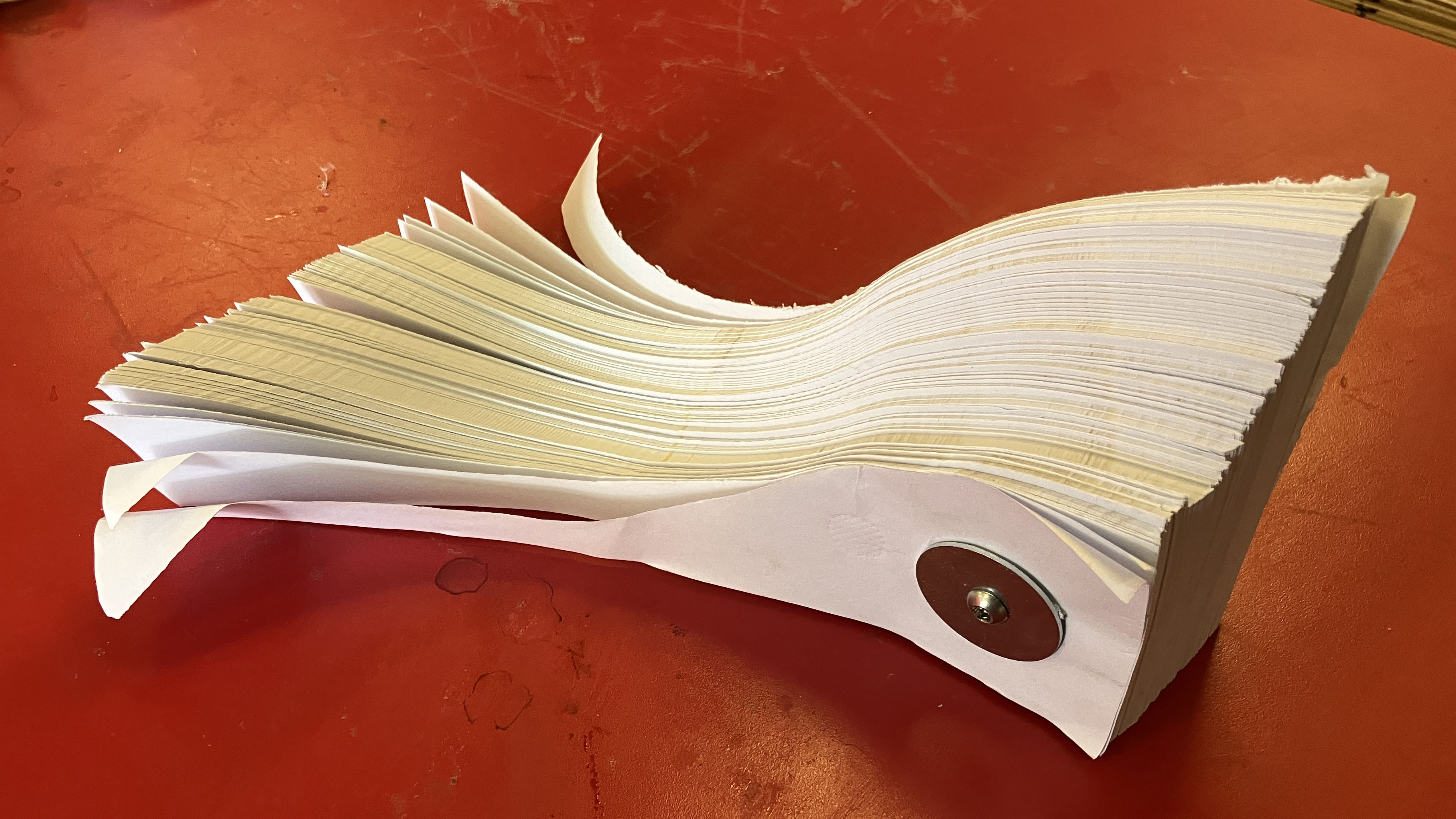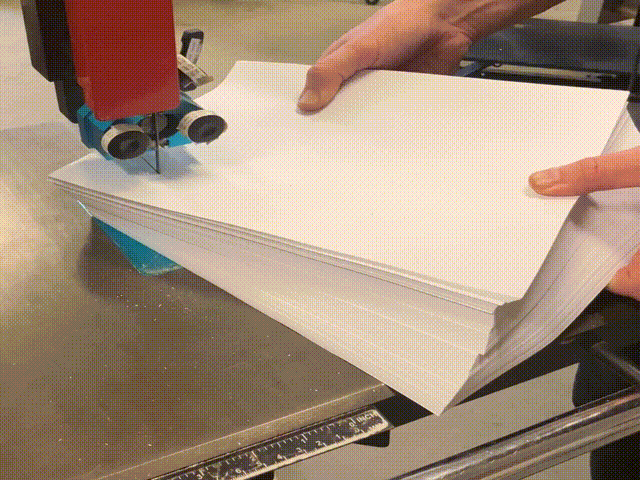Double Integrals As Paper Cuts
January 2024
In single-variable calculus, we use integrals to find the areas of two-dimensional curvy shapes. In multivariable calculus, we up the dimensionality, and use double integrals to find the volumes of curvy three-dimensional shapes.
In the simplest cases, the thought process is:
- we can use a single integral to find the area of a two-dimensional cross-section of a curvy shape;
- then, we can add up the infinite number of infinitely-thin cross-sections (using a second integral) to get the total volume of the shape.
As a vivid and tangible illustration, I sawed through several reams of paper and bolted the results together:
We have shapes, curvy in two dimensions (at least on their tops), which we can conceive of as consisting of an infinite number of infinitely-thin cross-sections. (Or at least, consisting of 500 75-micron-thin cross-sections.)
Some of the shapes I only bolted on one side, so that their cross-sections can be fanned out for a flourish:
George Jemmott suggested I used a band saw (rather than a jigsaw, as had been my initial plan), and suggested the way to curve the shapes along the shorter side. By fanning out the paper before sawing through it, and then re-aligning it afterwards, we get a curve in the short dimension, in addition to the curve in the long dimension created by moving it as it passes through the sawblade:
In class, several of the shapes whose volumes we tried to compute with double integrals had circular symmetry. A number of kids tried to use their knowledge of polar coordinates to integrate the shapes more cleverly and naturally. We can find a radial cross-section with one integral, they said, and spin it in a circle with another integral.
S. wasn’t sure about that logic. “If you have a finite number of sheets of paper,” he said, “and you revolve them around in a circle, the density is higher at the center than the outside.” His classmates were undeterred and confidently continued their calculations. S., knowing that infinite processes are sometimes very different and counterintuitive compared to their finite analogs, asked if that “density” difference is no longer relevant if there are an infinite number of sheets of paper. (I smiled and remained quiet.) Meanwhile, his classmates, having naiively integrated with respect to just \(dr\, d\theta\) rather than \(r\, dr\, d\theta\), were confused as to why their answers weren’t what they expected…


